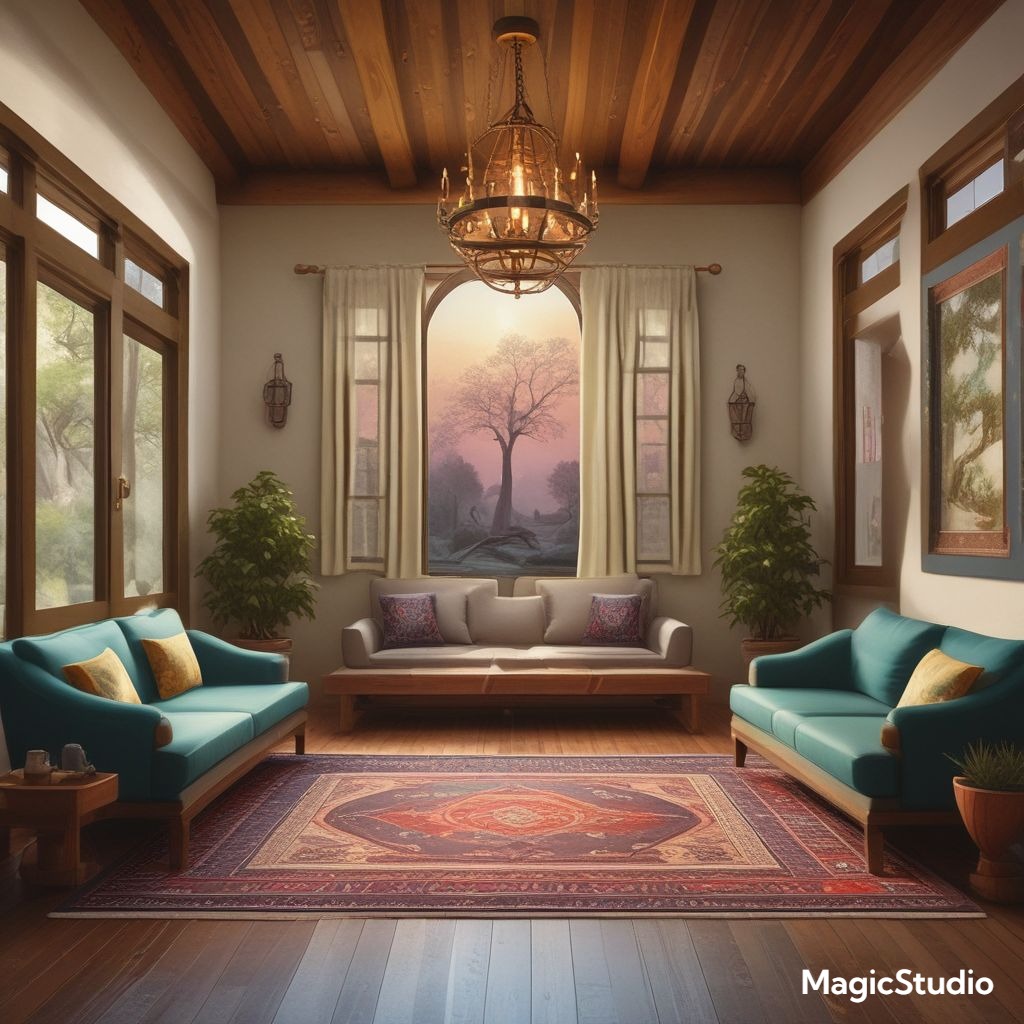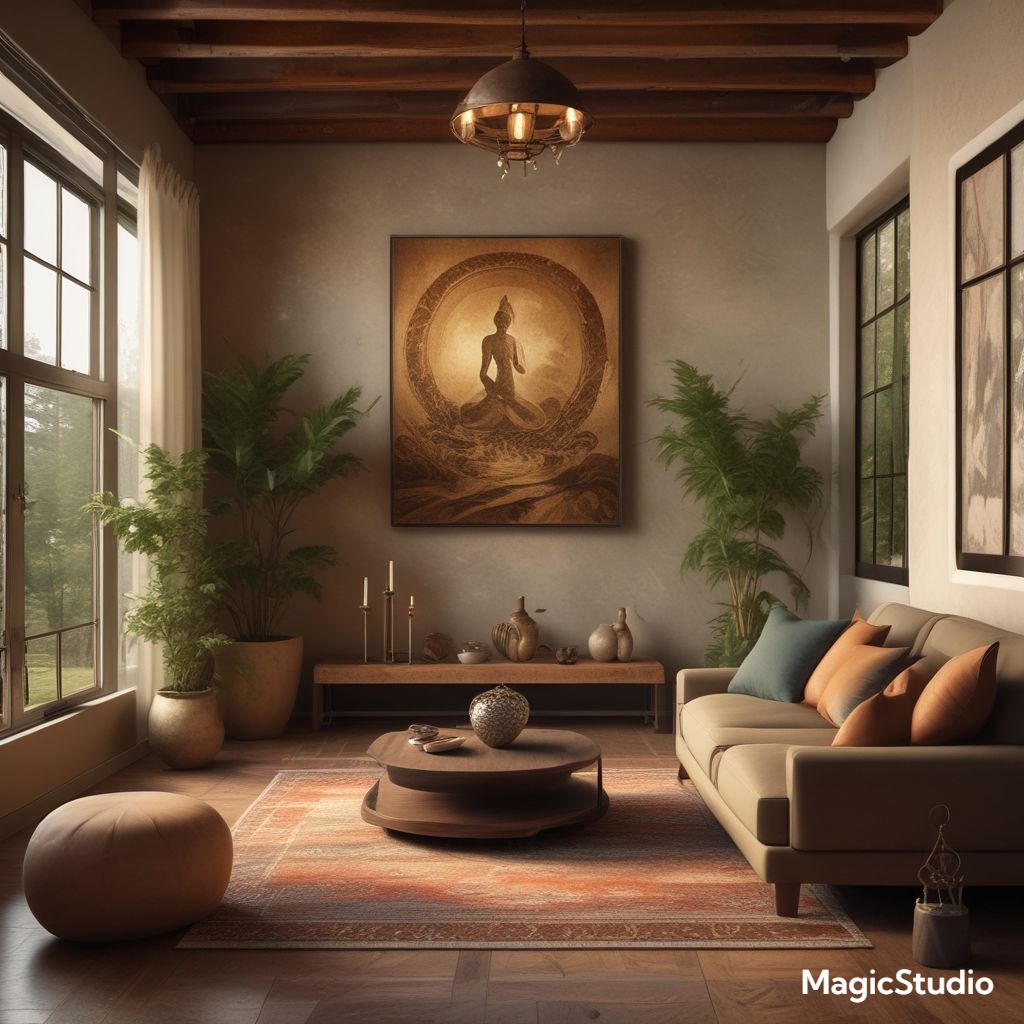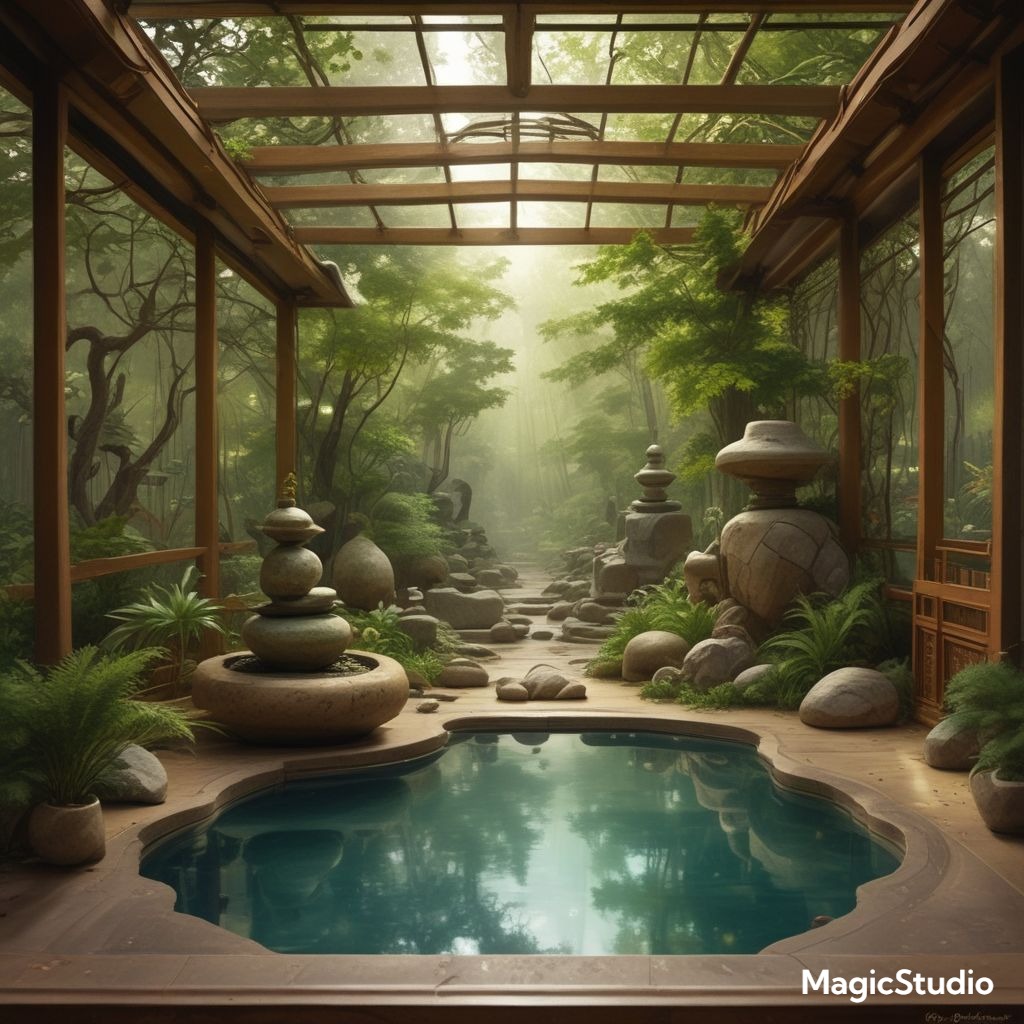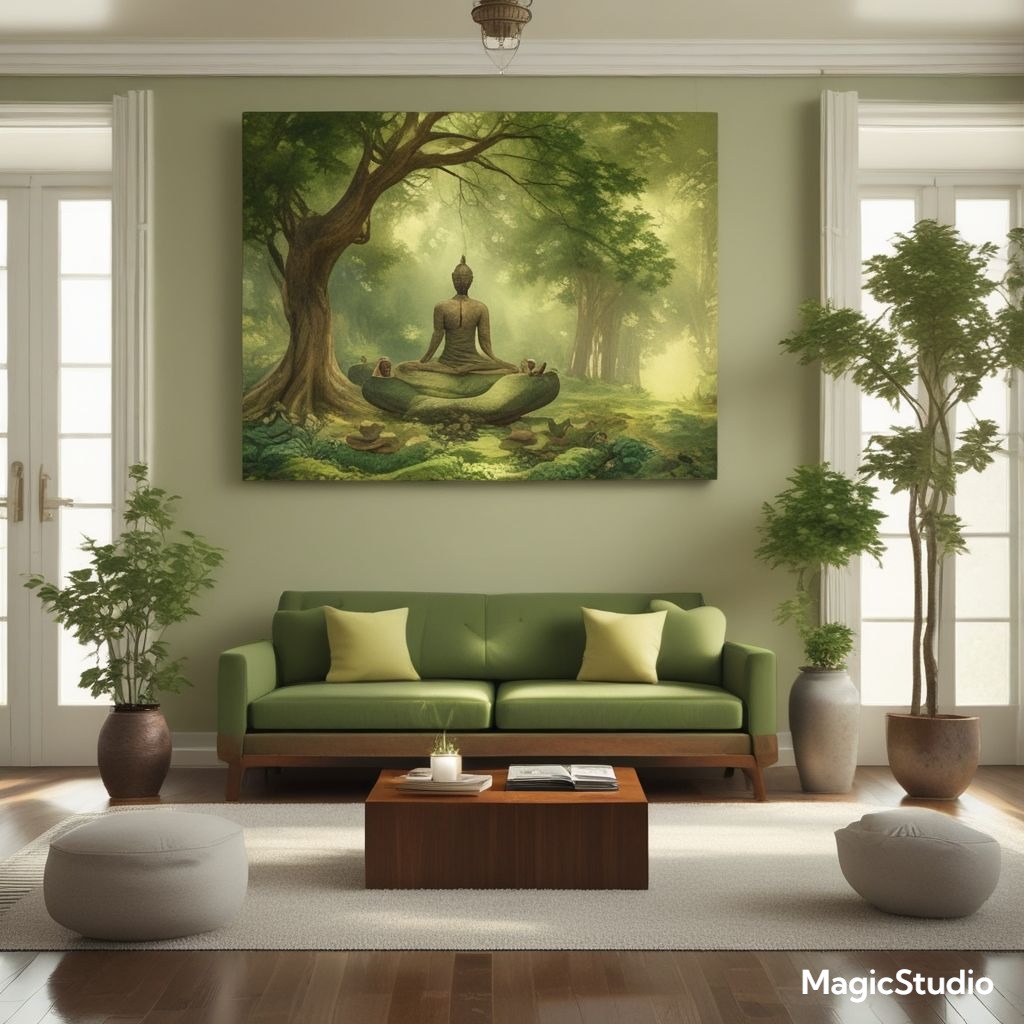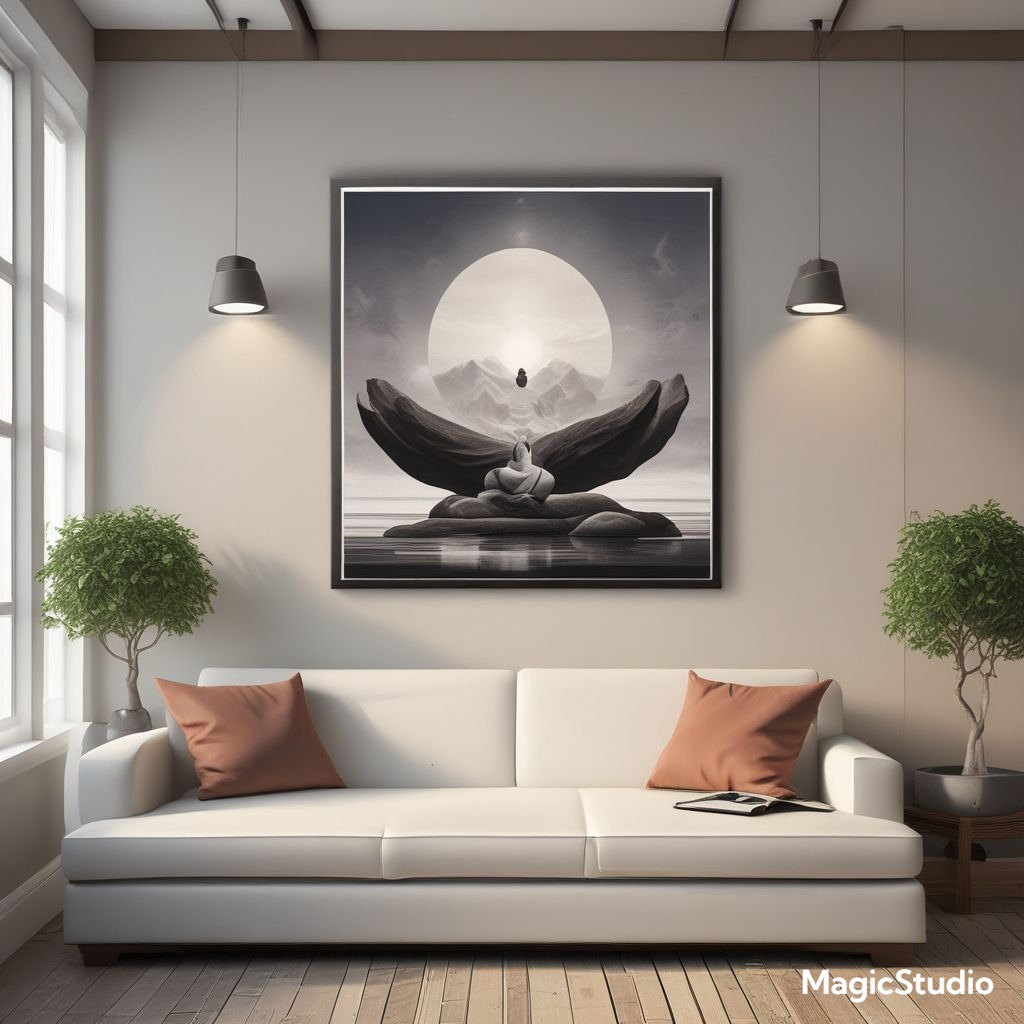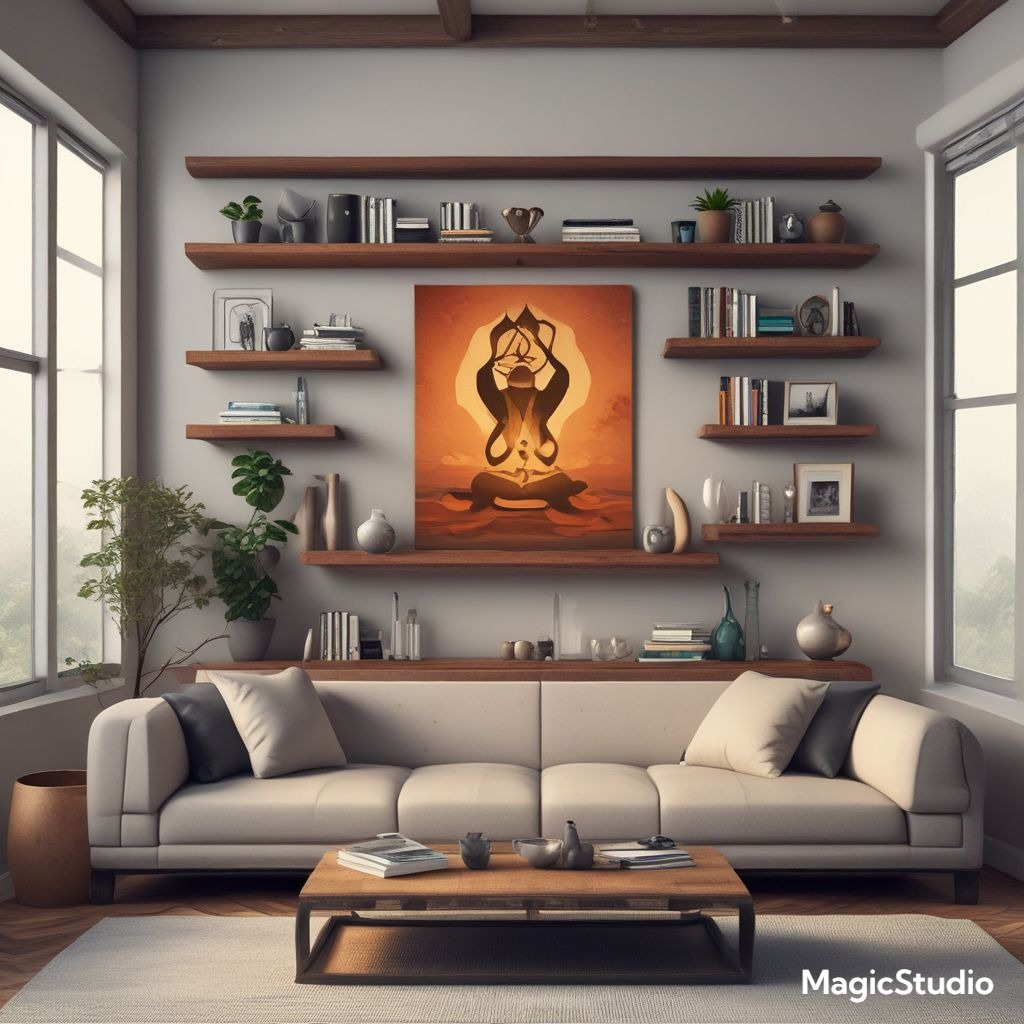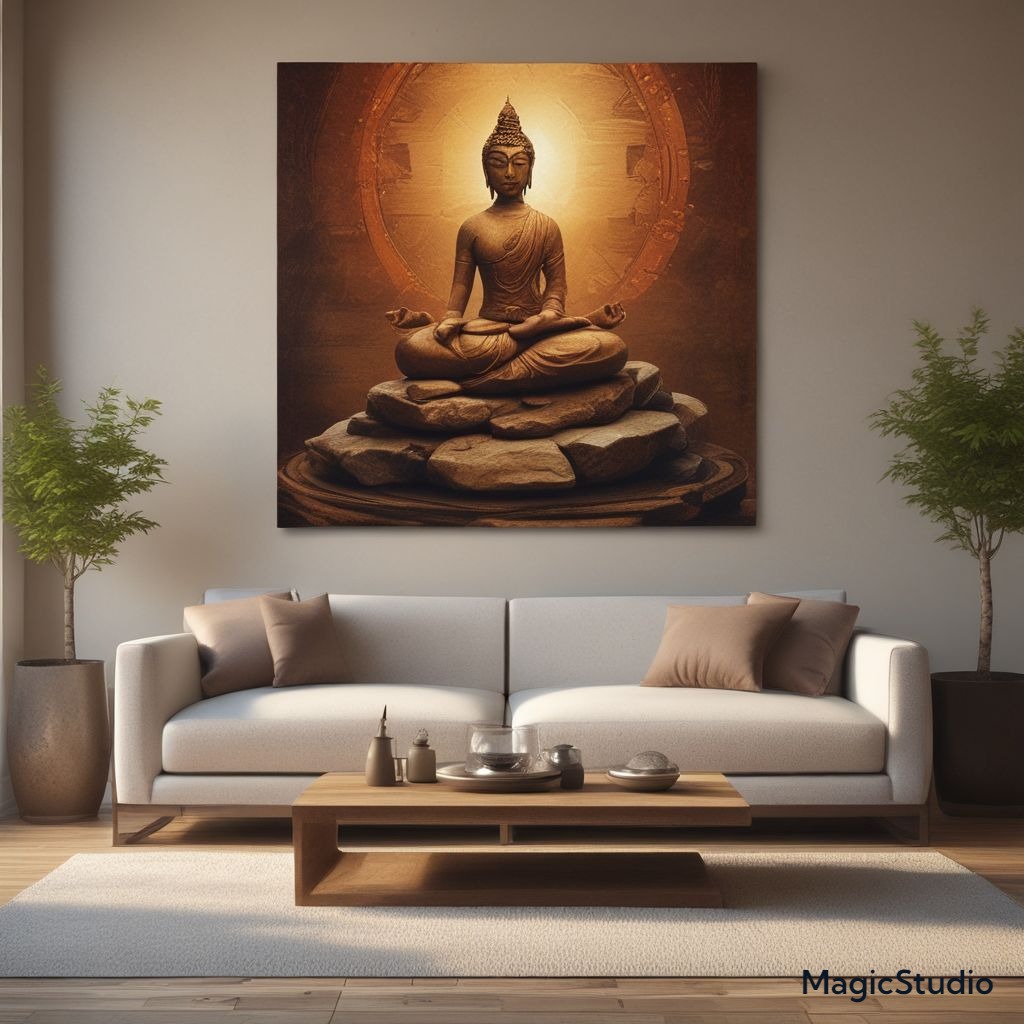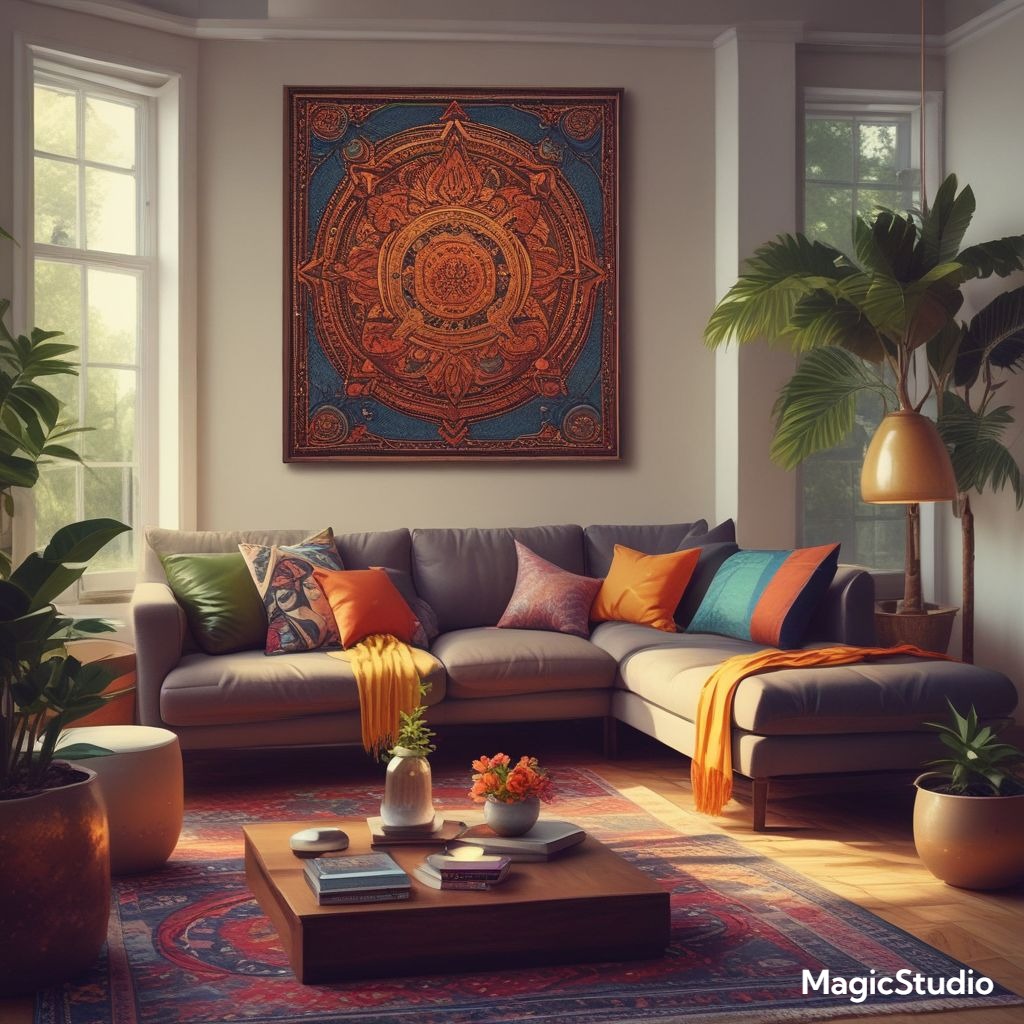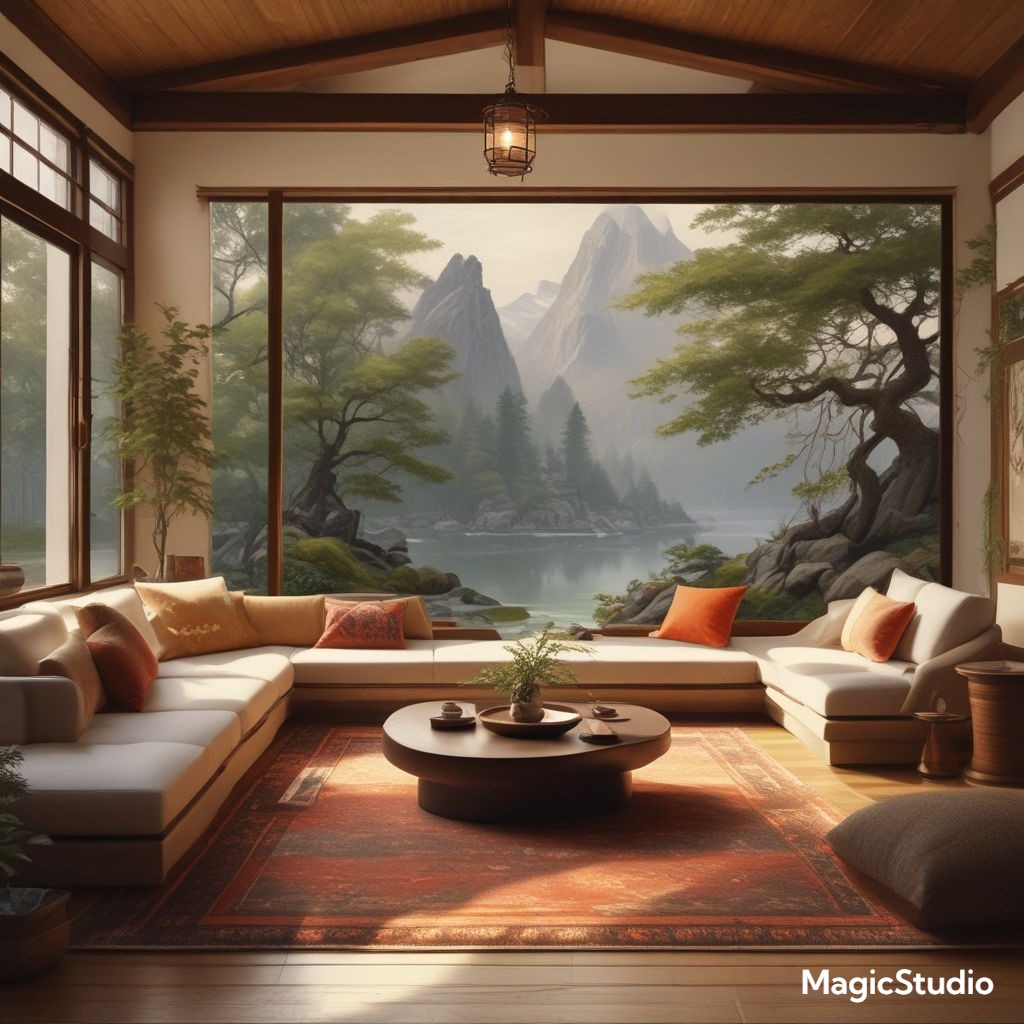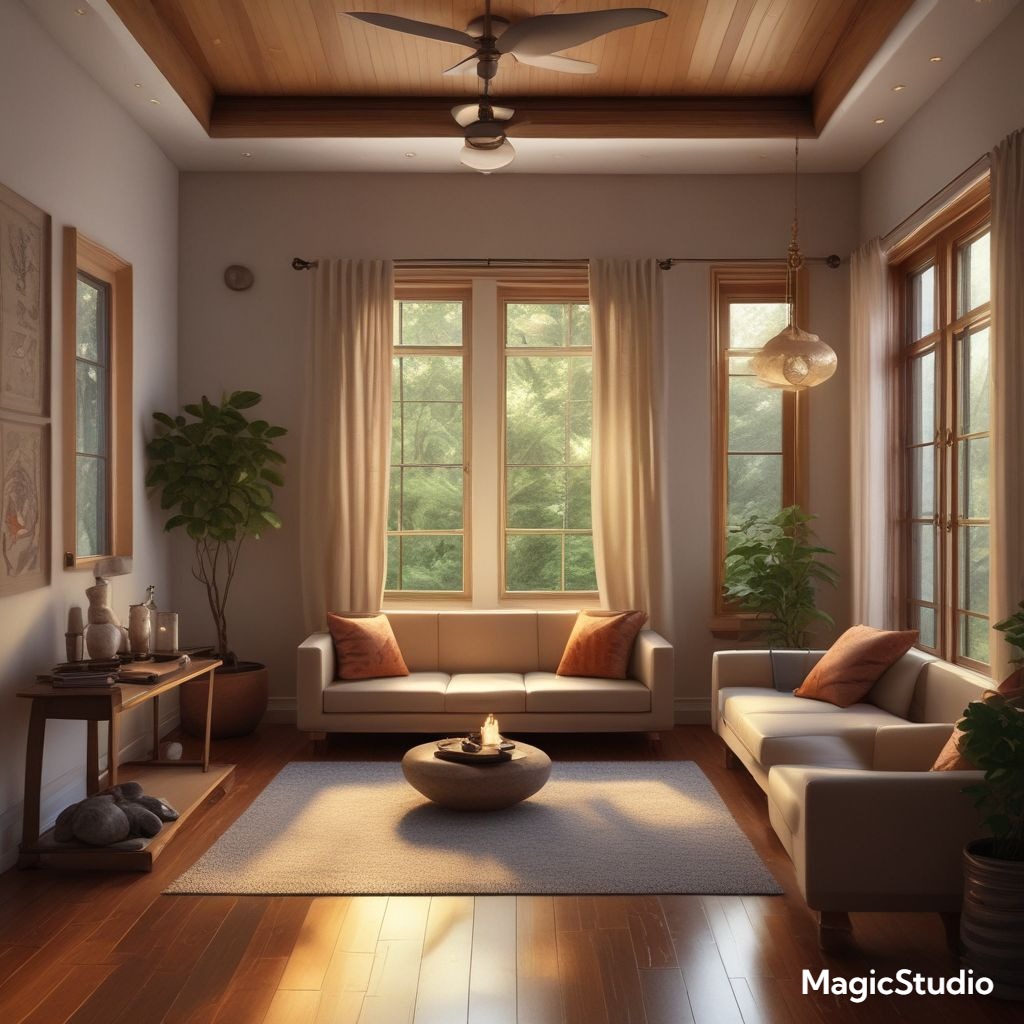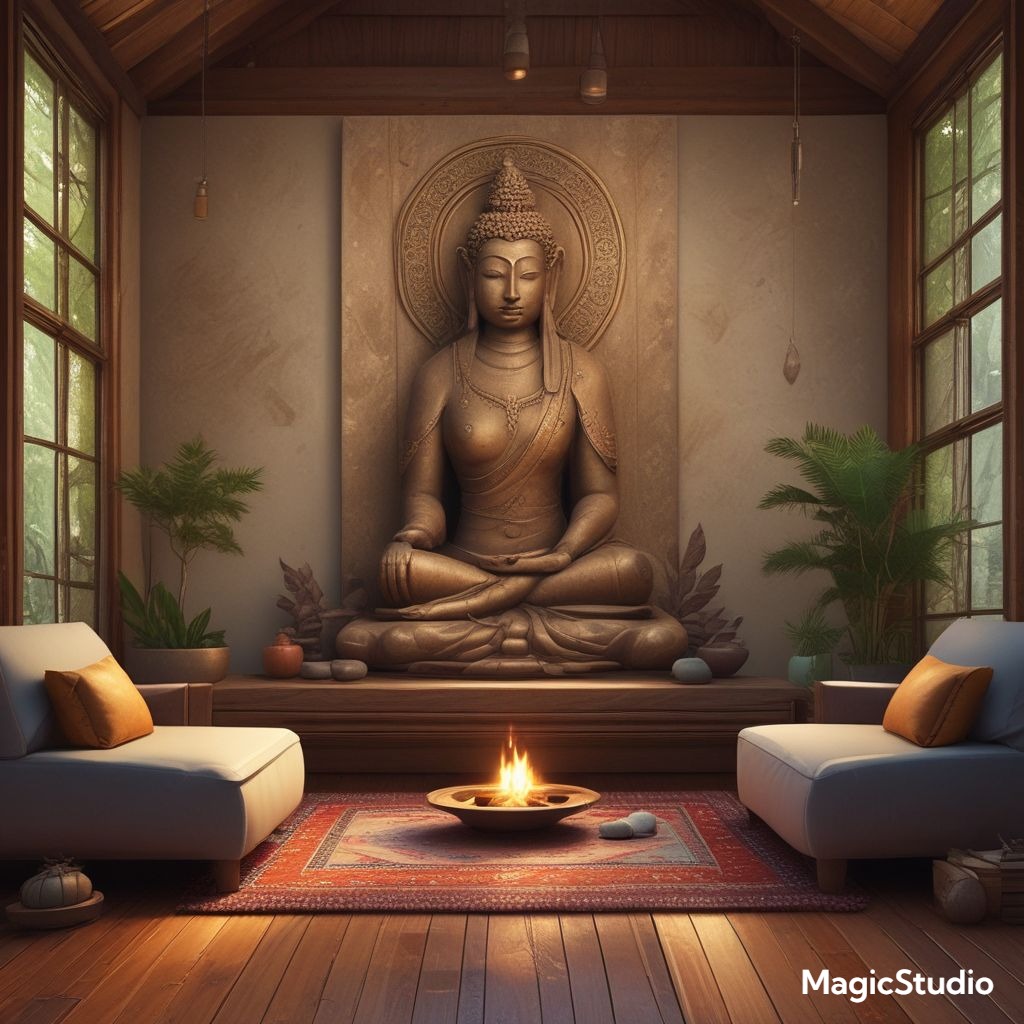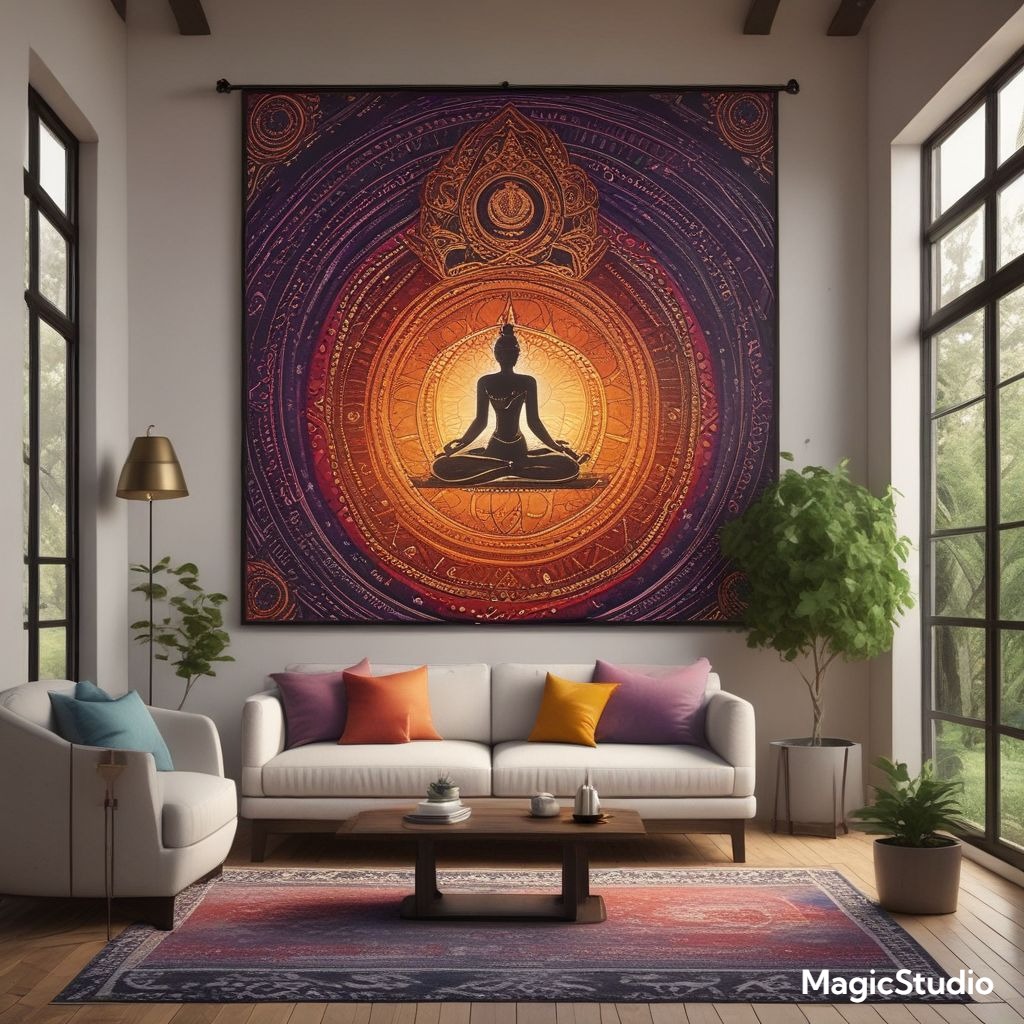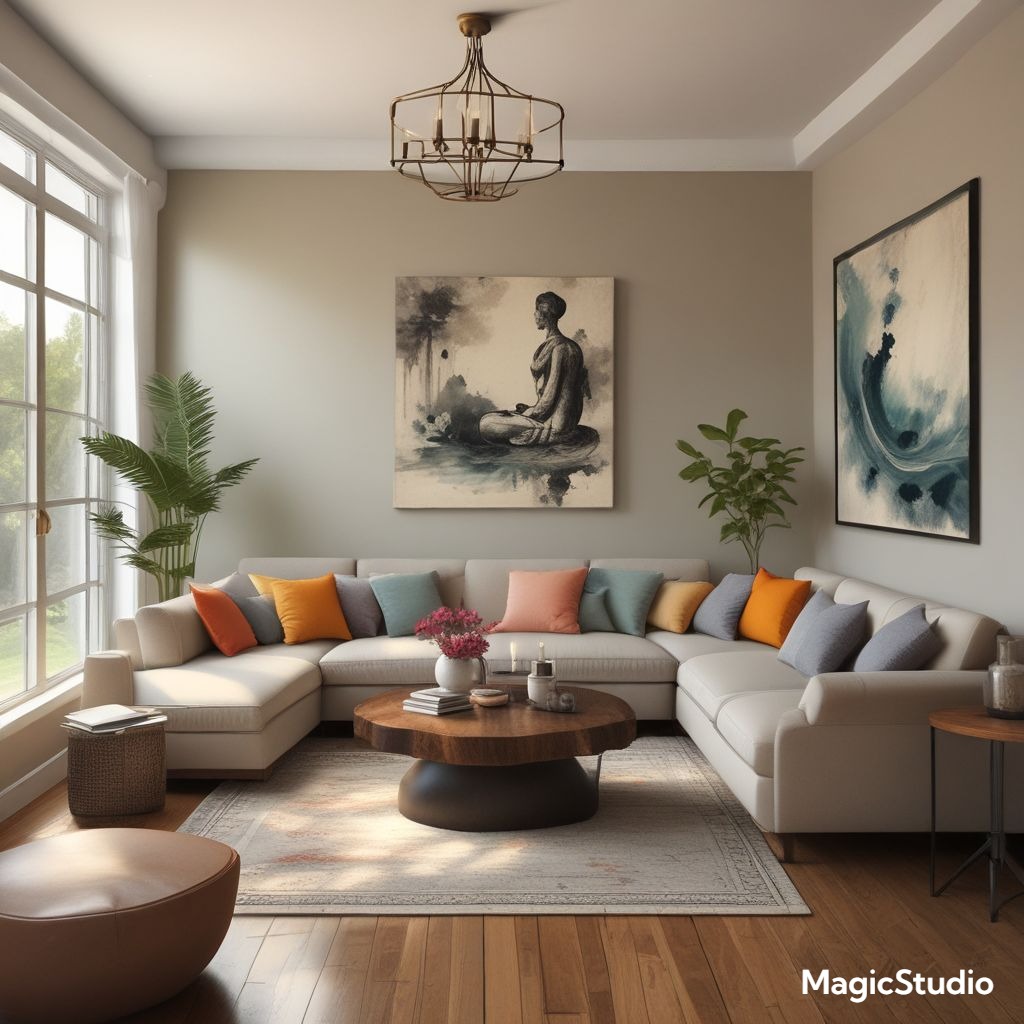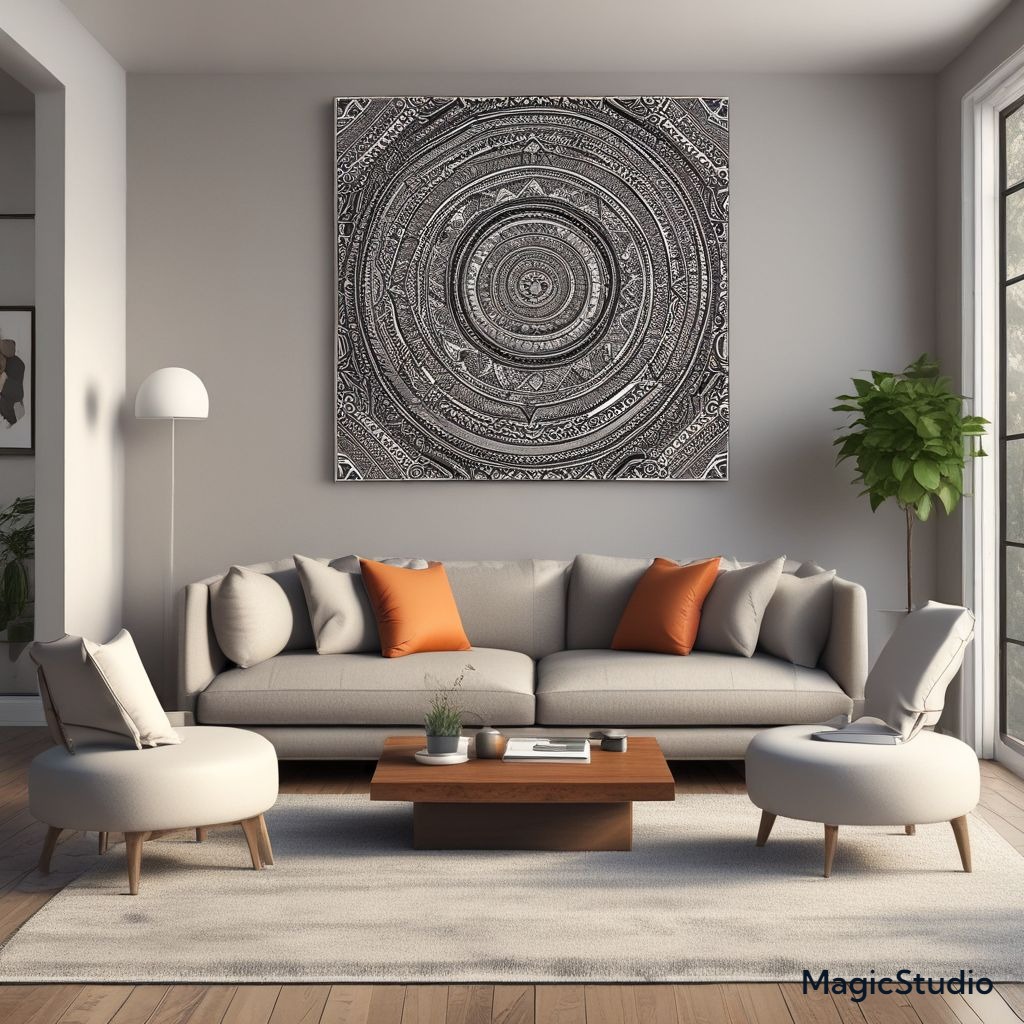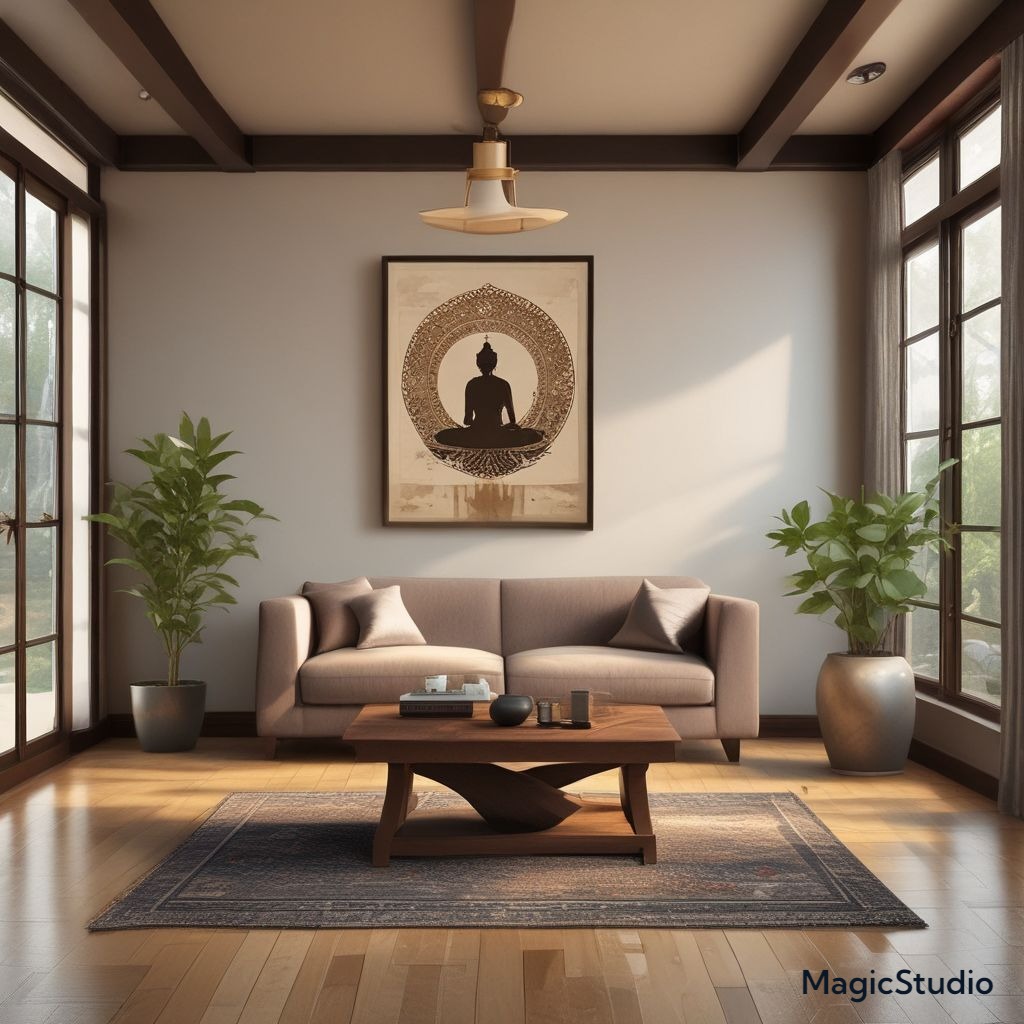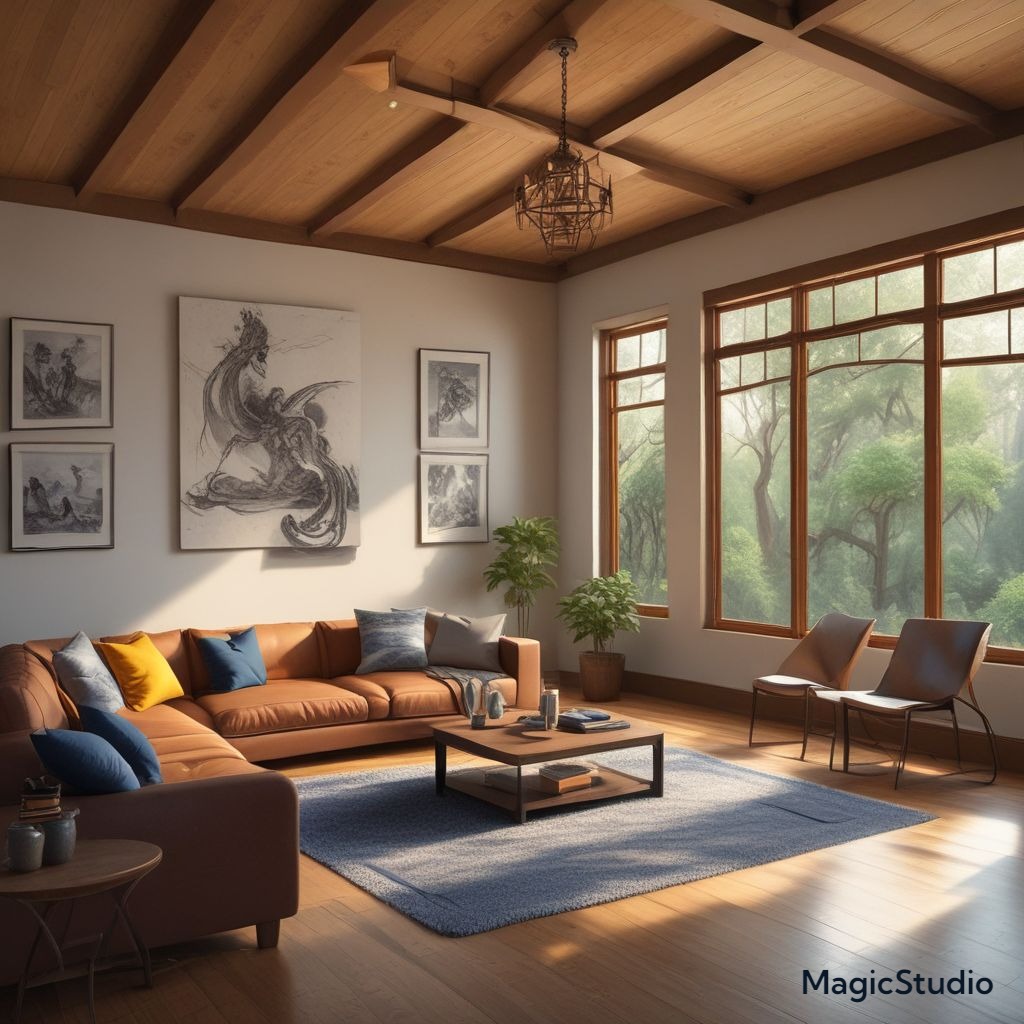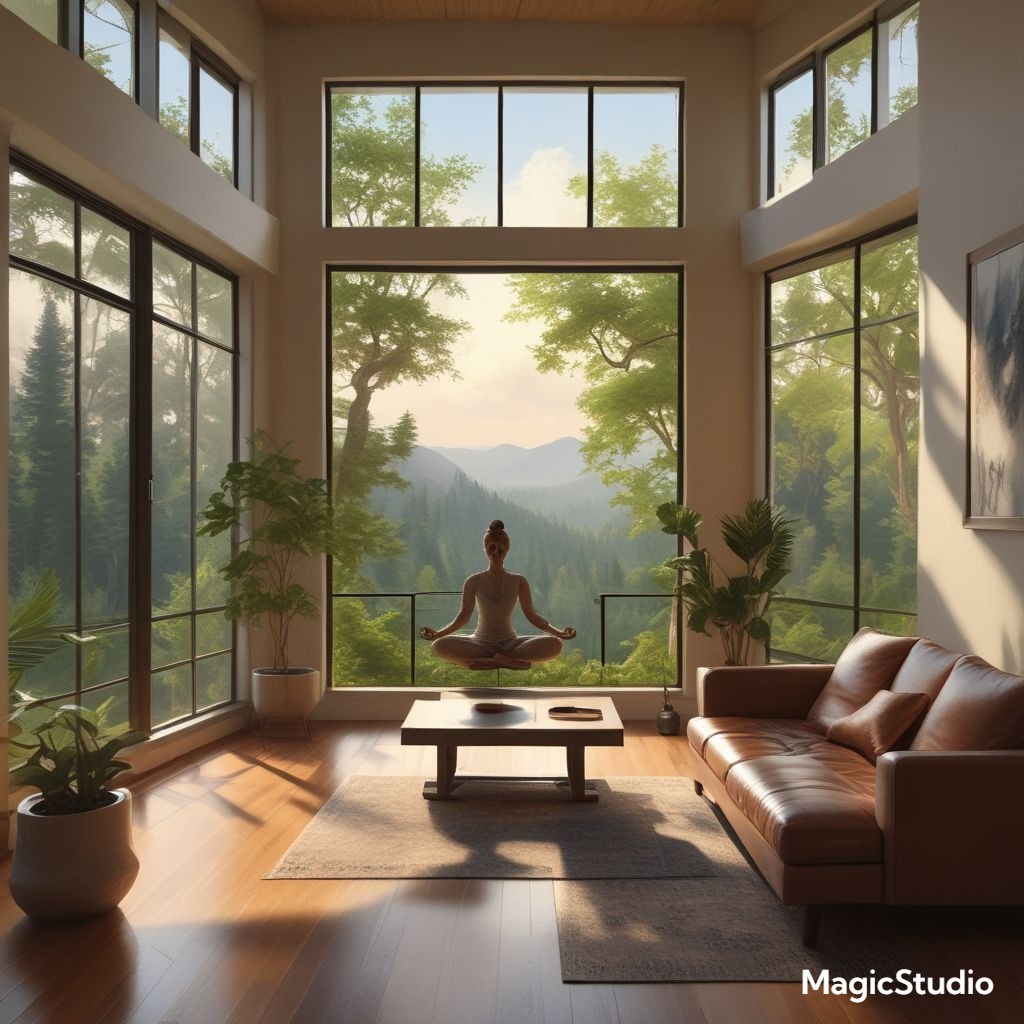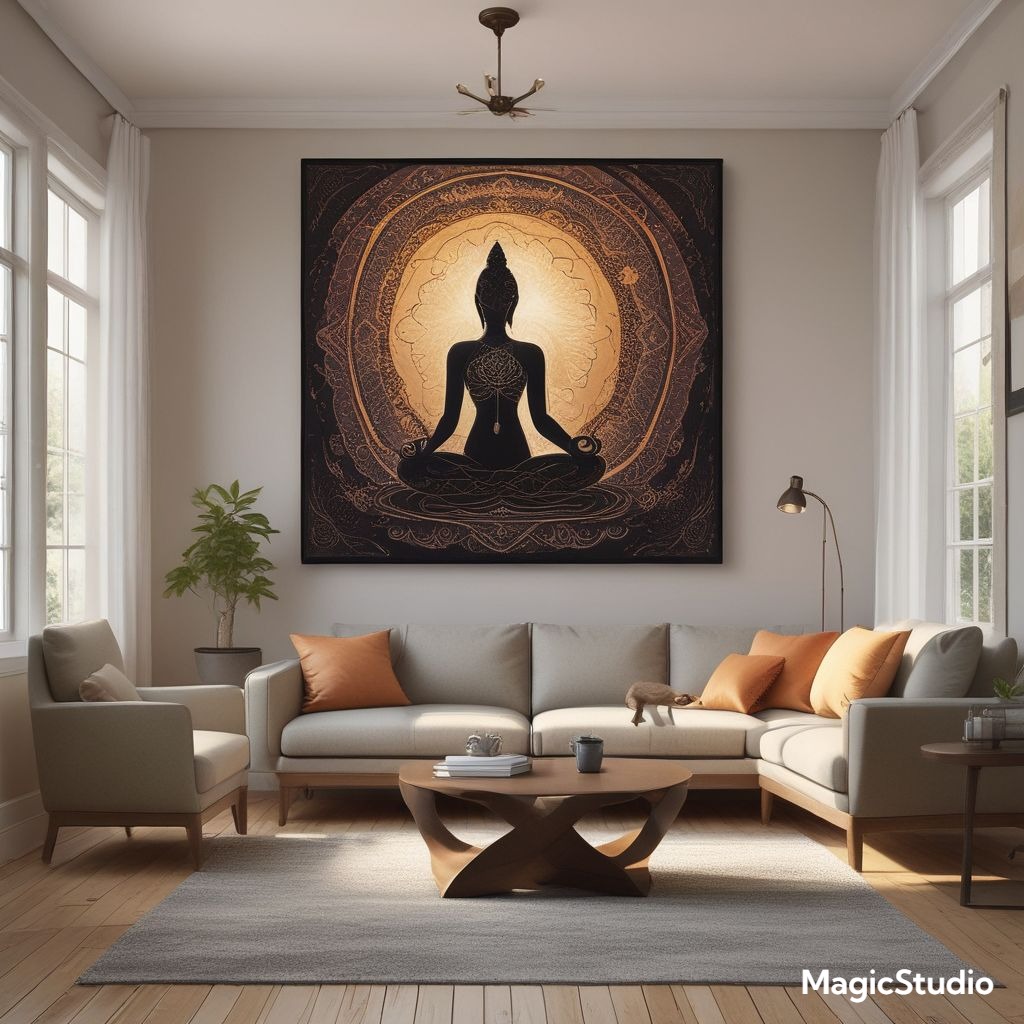Creating a yoga-inspired zen space in your living room is about more than just aesthetics. It’s about fostering a sense of tranquility, promoting mindfulness, and cultivating an environment that nourishes your well-being. From minimalist Zen gardens to vibrant, earthy tones, the possibilities are endless. Let’s explore some inspiring design ideas to create your own sanctuary of serenity.
Earthy Hues and Natural Textures
Embrace the calming power of nature with a color palette inspired by the earth. Think warm browns, deep greens, and soft creams, reflecting the hues of forests, mountains, and fields. Incorporate natural materials like wood, bamboo, stone, and jute to create a grounding and organic feel. This approach is particularly popular in Europe, where sustainable design and biophilic elements are highly valued. To add a touch of modernity, consider incorporating sleek, geometric furniture pieces and minimalist decor.
Serene Blue and White
A classic combination that evokes a sense of peace and tranquility, blue and white is a timeless choice for a zen living room. Opt for soft blues reminiscent of the sky or the ocean, paired with crisp white accents for a clean and airy feel. This palette is often associated with traditional Japanese aesthetics, where simplicity and harmony are paramount. Incorporate natural elements like bamboo screens, minimalist ceramic vases, and delicate white blossoms for a touch of elegance.
Zen Garden Sanctuary
Create a miniature oasis within your living room with a Zen garden. Use a shallow tray or container to create a miniature landscape featuring gravel, rocks, and miniature plants. The carefully arranged elements evoke a sense of balance and mindfulness. This design idea is gaining popularity in both the US and EU as people seek to bring elements of nature indoors. To elevate the aesthetic, consider incorporating a water feature, like a small fountain, for a soothing sound and visual appeal.
Soft Greens and Earthy Tones
Embrace the calming energy of nature with a color palette centered around soft greens and earthy tones. Think sage, mint, olive, and moss green, complemented by natural wood accents and woven textures. This design approach reflects the growing interest in biophilic design in both the US and EU, where incorporating natural elements into living spaces is highly valued. To add a touch of contemporary flair, consider incorporating geometric patterns or sleek metallic accents.
Minimalist Zen Elegance
Embrace the principles of minimalism with a clean and uncluttered design. Stick to a neutral color palette of white, gray, and black, with minimal use of decor. Choose simple, functional furniture with clean lines and streamlined designs. This aesthetic is popular in both the US and EU, reflecting a desire for simplicity and functionality. To add warmth and texture, consider incorporating natural materials like wood and bamboo, and adding a touch of greenery with potted plants.
Floating Shelves and Minimalist Decor
Maximize space and create a sense of airiness with floating shelves. Use them to display a curated selection of objects that inspire tranquility, such as minimalist sculptures, books, or art prints. This design approach is highly popular in the US and EU as people look for ways to make small spaces feel larger and more inviting. To further enhance the minimalist aesthetic, keep the number of decorative items to a minimum, allowing each piece to stand out.
Textured Walls and Natural Elements
Create a sense of depth and texture by using natural materials on your walls. Consider incorporating stone accents, wood paneling, or wallpaper with natural patterns. This design approach is growing in popularity, as people seek to connect with nature and create a more authentic feel in their homes. To complement the textured walls, add natural elements like bamboo blinds, wicker baskets, or woven rugs.
Warm Woods and Soft Lighting
Create a cozy and inviting atmosphere with warm wood tones and soft lighting. Use natural wood flooring, furniture pieces with wood accents, and introduce warm, diffused lighting through lamps or candles. This design approach is particularly popular in the US, where creating a welcoming and comfortable environment is highly valued. To add a touch of sophistication, consider incorporating a wood-burning fireplace or a wood-framed mirror.
Bohemian Zen
Embrace the bohemian spirit with a blend of earthy tones, natural textures, and global influences. Incorporate elements like macrame wall hangings, Moroccan rugs, and colorful throws. This style is popular in both the US and EU, reflecting a desire for individuality and a connection with different cultures. To maintain a sense of zen, keep the overall design balanced and avoid over-cluttering.
Japanese-Inspired Serenity
Create a sense of tranquility and harmony with a Japanese-inspired design. Embrace minimalism, natural materials, and a focus on functionality. Use bamboo screens, sliding doors, and traditional Japanese lanterns to evoke a sense of serenity. This aesthetic is gaining popularity in both the US and EU as people seek to incorporate cultural influences into their homes. To add a touch of personality, incorporate Japanese art prints, calligraphy, or bonsai trees.
Soft Lighting and Ambient Sounds
Create a calming atmosphere with soft, diffused lighting. Use dimmable light bulbs, lamps with warm light, and incorporate natural light whenever possible. To enhance the relaxing ambiance, consider adding ambient sounds like nature sounds, calming music, or a water fountain. This approach is particularly popular in the US and EU as people strive to create a sanctuary of peace and quiet in their homes.
Meditation Corner
Dedicate a specific space in your living room for meditation. Create a cozy corner with a comfortable cushion or mat, a meditation pillow, and soft lighting. This design idea is growing in popularity as people seek to integrate mindfulness practices into their daily lives. To enhance the sense of peace and tranquility, consider adding a small fountain, a few plants, or a calming artwork.
Yoga Studio Vibes
Create a space that feels like a yoga studio with a focus on functionality and a sense of openness. Use a neutral color palette with splashes of color, natural materials, and ample space for movement. This design approach is particularly popular in the US and EU, reflecting a growing interest in yoga and mindfulness. To add a touch of personality, incorporate yoga-inspired artwork, wall tapestries, or motivational quotes.
Neutral Colors and Pops of Color
Create a balanced and harmonious space with a neutral color palette accented with pops of color. Use soft grays, creams, or whites as the base, and introduce vibrant hues through pillows, throws, or artwork. This design approach is popular in both the US and EU, reflecting a desire for a calm and inviting space with a touch of personality. To ensure the color accents enhance the zen feel, choose colors that are calming and grounding.
Geometric Patterns and Minimalist Decor
Embrace geometric patterns and minimalist decor to create a modern and sophisticated zen space. Use geometric patterns in rugs, throw pillows, or artwork. Keep the decor to a minimum, choosing pieces that are both functional and visually appealing. This design approach is highly popular in the US and EU, reflecting a desire for clean lines and a streamlined aesthetic.
Feng Shui Principles
Incorporate Feng Shui principles to enhance the energy flow in your living room. Consider the placement of furniture, the use of mirrors, and the incorporation of elements like wood, fire, earth, metal, and water. This design approach is popular in both the US and EU as people seek to create a harmonious and balanced living environment.
Open Floor Plan
Maximize space and create a sense of openness with an open floor plan. If possible, remove walls or barriers to create a seamless flow between different areas of the living room. This design approach is highly popular in both the US and EU, reflecting a desire for spacious and airy living environments.
Natural Light and Views
Maximize natural light by incorporating large windows and skylights. If your living room has stunning views, consider creating a seating area that allows you to enjoy them. This design approach is popular in both the US and EU, as people seek to connect with nature and create a sense of serenity in their homes.
Personalized Touches
Add personal touches to make your zen living room truly your own. Incorporate items that have sentimental value, meaningful artwork, or personal mementos. This design approach is universal, reflecting a desire to create a space that feels welcoming and authentic.
